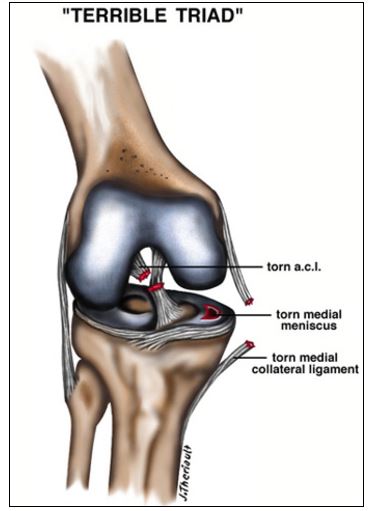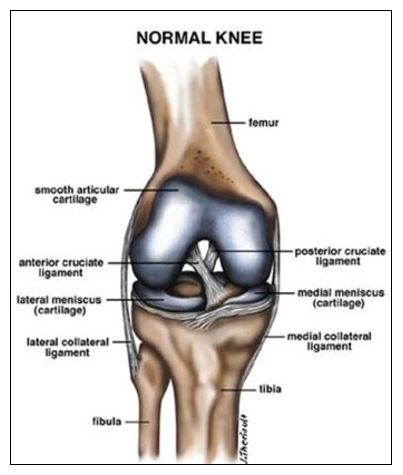ACL rupture and associated structural injuries of the knee
The ACL (anterior cruciate ligament) is part of a complicated network of ligaments that help stabilise and hold the knee. These structures are especially vulnerable to injury during sporting activity or as the result of direct impact.
ACL rupture is often associated with meniscal and medial ligament injury. This combination is known as a the “terrible triad” of knee injuries.

Knee Specialist - Dr. Kaushik Hazratwala
In order to preserve the precious chondral surfaces of the knee, and prevent arthritis later in life, these injuries must be repaired. The ACL must be reconstructed, the medial ligament can be repaired, or rested to allow healing, and the meniscus can be surgically repaired. Depending on the extent of the injuries a patient may or may not be placed in a knee brace after surgery to protect the repairs.
Injuries associated with ACL rupture often dictate the outcome the reconstruction surgery. Knees with meniscal involvement often have a poorer outcome.
If the ACL is left unreconstructed and the knee develops recurrent instability the meniscus can rupture with subsequent episodes of instability as well. So if you have symptoms of recurrent instability after knee injury do not ignore it- seek expert medical opinion.
ACL Surgical Technique
The ACL is repaired using one hamstring tendon, folded 4 times over to make a new ligament. The ends of the graft are secured with anchors in the bone. Over time the body turns the tendon into a ligament as it establishes a new blood supply. The medial ligaments can also be repaired using another hamstring tendon and both ends are secured in the bone with dissolvable screws.

Knee Surgeon - Dr. Kaushik Hazratwala
The torn meniscus can be repaired with suture anchors that disolve over time. Depending on the position of the tear, this will determine the success rate of the repair. If the tear is in the “red-red zone”, whereby blood supply is high, there is more of a chance of healing than a tear in a “white-white zone” where the blood supply is minimal. All tears are worth the trouble to repair if possible, as the risk of arthritis later in life, from knees that do not have a mensicus to cushion the ends of the bone and prevent joint degeneration. In some instances a meniscus cannot be repaired. Minimal removal of the part that is torn is required as it may “catch” when moving the knee and can cause damage to the surfaces of the bone.
Recovery time for ACL injury and meniscus tears is dependent on location of the tears and the integrity of the repair. Initial rehabilitation is aimed at keeping the swelling down and activating quadricep muscle groups to provide stability to the knee during exercises later in the rehabilitation program.
Dr. Kaushik Hazratwala is one of the Townsville Knee Specialists. If you have an ACL tear, medial ligament tear or meniscus tear, contact your GP for an appointment to Dr Kaushik Hazratwala.